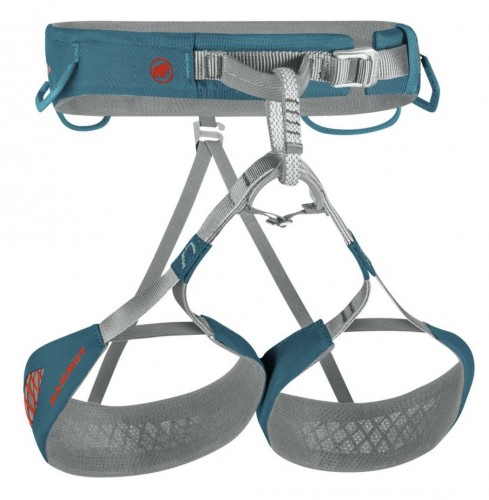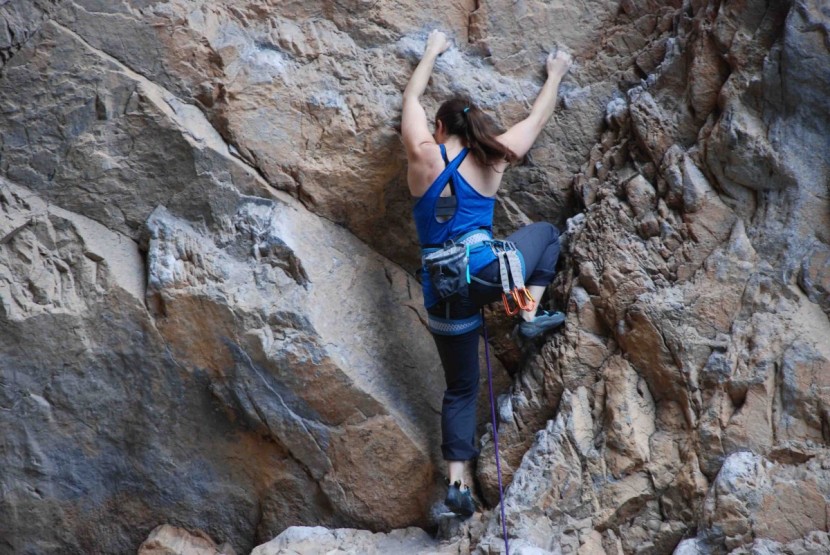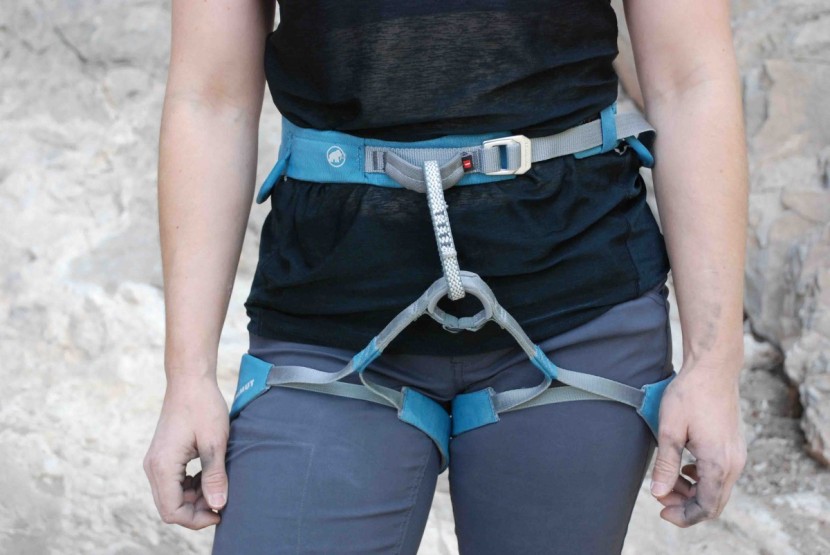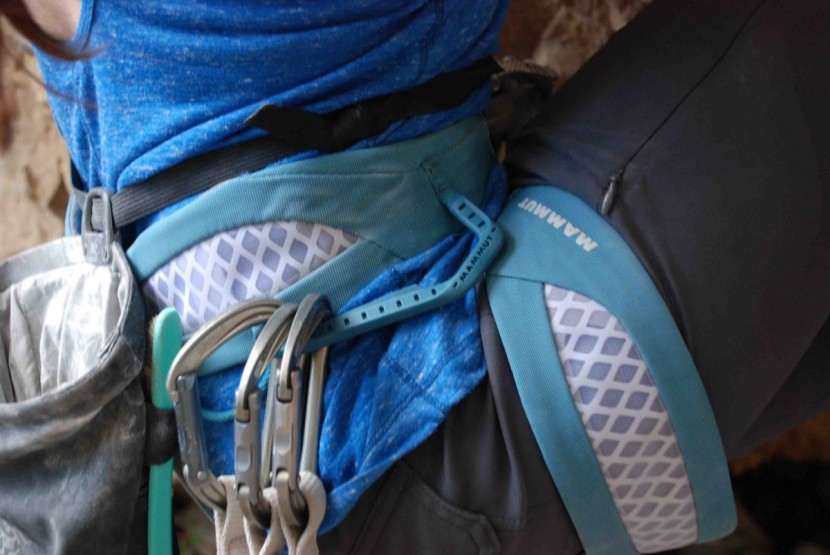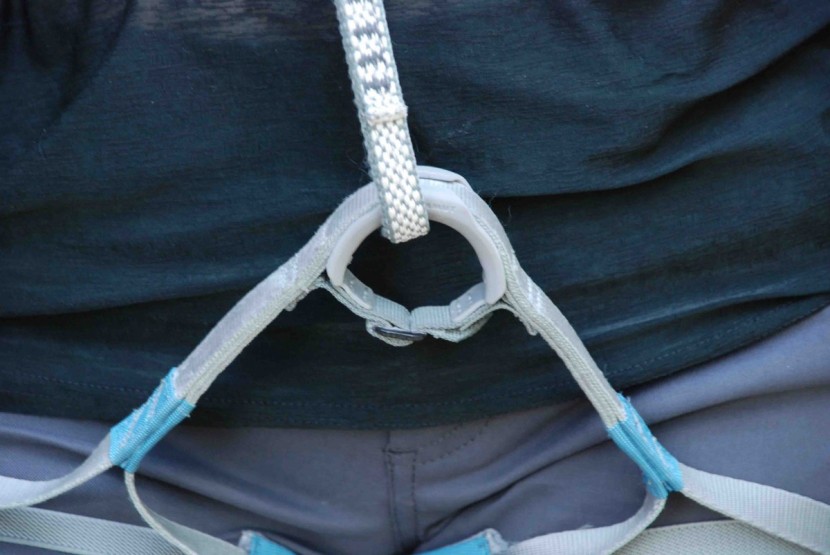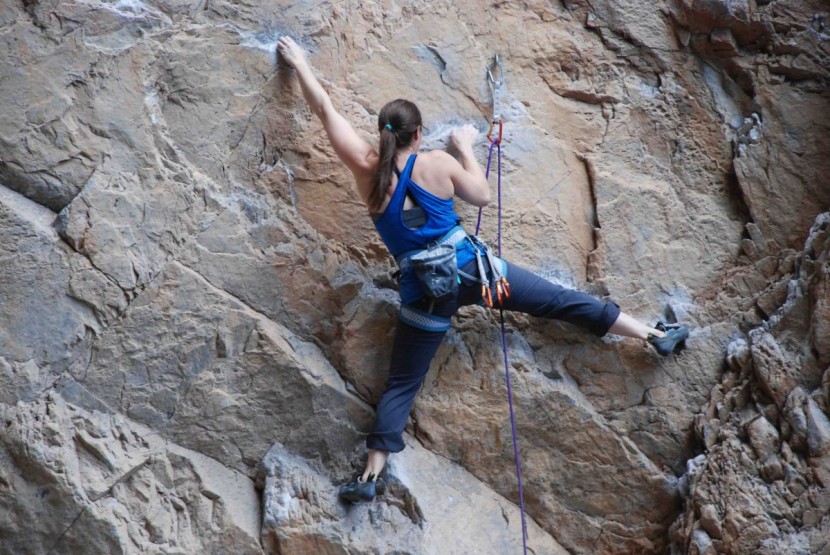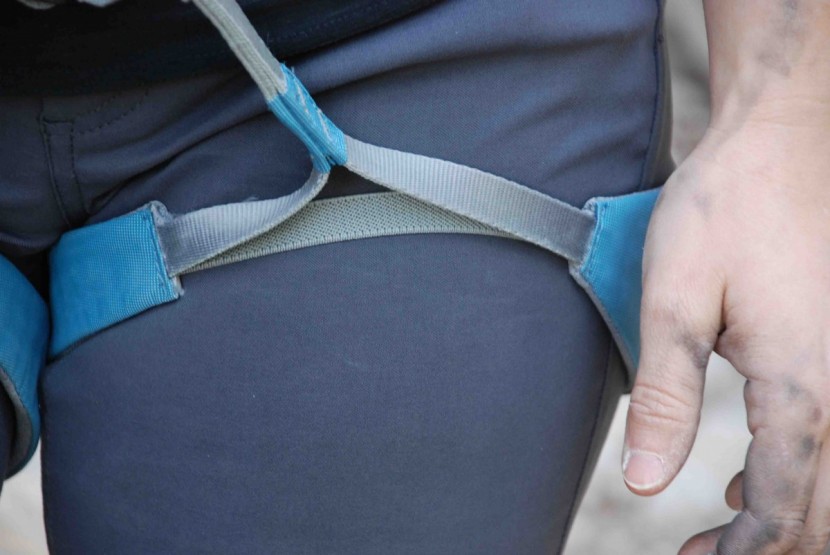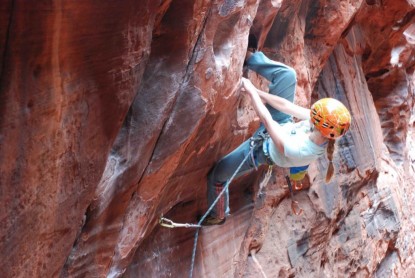Mammut Zephir Review
Our Verdict
Our Analysis and Test Results
The Mammut Zephir harness is constructed with Split Webbing technology. The main structural webbing for the waistbelt splits into two strands that angle away from each other around the back of the waist. This leaves a 3.5-inch wide interior mesh section with only minimal padding but a lot of airflow. It has two long, plastic-molded gear loops at the front and two smaller ones at the back. This was the lightest harness that we tested, weighing only 9.5 ounces.
Standing Comfort
This was one of the lightest harnesses that we tested. It weighs only 9.5 ounces, and we noticed a difference between this harness and the Edelrid Jayne II, which is 5 ounces heavier.
While this weight difference is probably negligible when it comes to performance, it can contribute to comfort, both positively and negatively. For our Standing Comfort metric, the Mammut Zephir came out on top - our testers barely noticed that the harness was on while standing around at the crag and belaying. Best of all, the airflow in the back helped us stay cooler on hot days both at the gym and the crag.
Hanging Comfort
The minimal padding in the waistbelt and leg loops resulted in this not being the most comfortable harness to actually “hang out” in.
While the wide waistbelt did do a better job of distributing the load than the Mad Rock Venus, we soon felt the lack of padding in our hang test. This harness is comfortable enough for belaying and hang-dogging on a hard sport climb, but it's not the one we'd want to do a long route in.
Discipline-Specific Features
Mammut designed this model as an “extremely light high-end sport climbing harness tailored to the female anatomy.” We thought that they did a great job in achieving a light harness that fit most of our testers well, particularly those with a longer rise (the distance between the leg loops and where the harness sits on the waist) and those who have medium to large legs. However, we did not like the gear loops on this harness.
The over-sized front gear loop can easily hold ten quickdraws, which is great, but it has a forward-angle design that we found annoying. While we presume the designers thought it would keep the draws towards the front of the gear loop, as soon as the angle steepens, it actually ends up acting like a ramp that shoots them to the back of the loop and out of the normal reach of where your draws should be. This is particularly noticeable when there are only a few draws left on your harness. If you are only climbing slabs, then you might never notice this issue, but for a harness specially designed for high-end sport climbing (which tends to be steep), we think these gear loops are a misfire.
There are some other unique features on the Zephir though. The belay loop has red wear-indicator threads sewn into it. When the belay loop becomes abraded and worn, those threads will show through, letting you know that it is time to replace your harness. We should note here that the belay loop on this harness is made of 10mm Dyneema webbing, and is half the size of the belay loops on the other models that we tested. Belay loops tend to get a lot of wear, and our concern with this loop is that it might not last as long as a wider, beefier loop. Once your belay loop is worn out, you are pretty much left with no option but to retire your harness or see if the manufacturer will sew a new one on for you (not likely). One final great feature is the point where the leg loops are attached to the belay loop, which is reinforced with plastic to minimize wear at that high-friction spot.
Mobility
The Zephir scored high for mobility. The minimalist, lightweight design never weighed our testers down, and the extra-long elastic on the leg loops gave us an excellent range of motion during high-steps and heel hooks.
We liked the mobility of this harness as much as the Black Diamond Solution and a little more than the Arc'teryx FL-355. The leg loops on the FL-355 are sized a little tighter than the Zephir's, which felt a little constricting and impeded our movement a slight bit.
Versatility
The Mammut Zephir is not the most versatile harness; it really is a gym- and sport-specific model.
It has a small bungee cord gear loop that is suitable for a chalk bag, but we'd hesitate to clip a trailing rope to it. While you could fit a lot of gear on the main over-sized gear loop, we wouldn't want to spend too much time at a hanging belay due to the minimal padding on the waistbelt. Additionally, the waist belt does not have any ice clipper slots. If you are looking for a truly versatile harness that you can use for all types of climbing, then we'd recommend our Editors' Choice pick, the Camp Supernova, or our Top Pick for Trad Climbing, the Misty Mountain Silhouette.
Adjustability
The non-adjustable leg loops are comfortably sized, and we could wear this harness over leggings or jeans, but it would be difficult to try and wear it over winter pants for ice climbing.
The leg loop attachment point is low-profile and easy to detach, and in fact, it detached itself when we were hiking around in it with a pack on!
Best Applications
The Zephir harness is best suited for sport and gym climbing. This model would be our top choice if we were in the market for a gym-only harness.
Value
At $100, this model is actually on the expensive end, particularly considering that it is not very versatile. However, it is ultra-lightweight, so if shaving every ounce off your gear is important to you then perhaps the price tag is worth it. For half the price, you can get the Black Diamond Momentum, which is a slightly more versatile model.
Conclusion
The Mammut Zephir is surprisingly comfortable given its lightweight design, and if you hate having a sweaty back and climb in warm places, then this could be the harness for you. We didn't like the design of the gear loops, as they made it difficult to find our clips on steep routes, but if you're always clipping fixed draws or only climbing at the gym, then this wouldn't be an issue for you.


